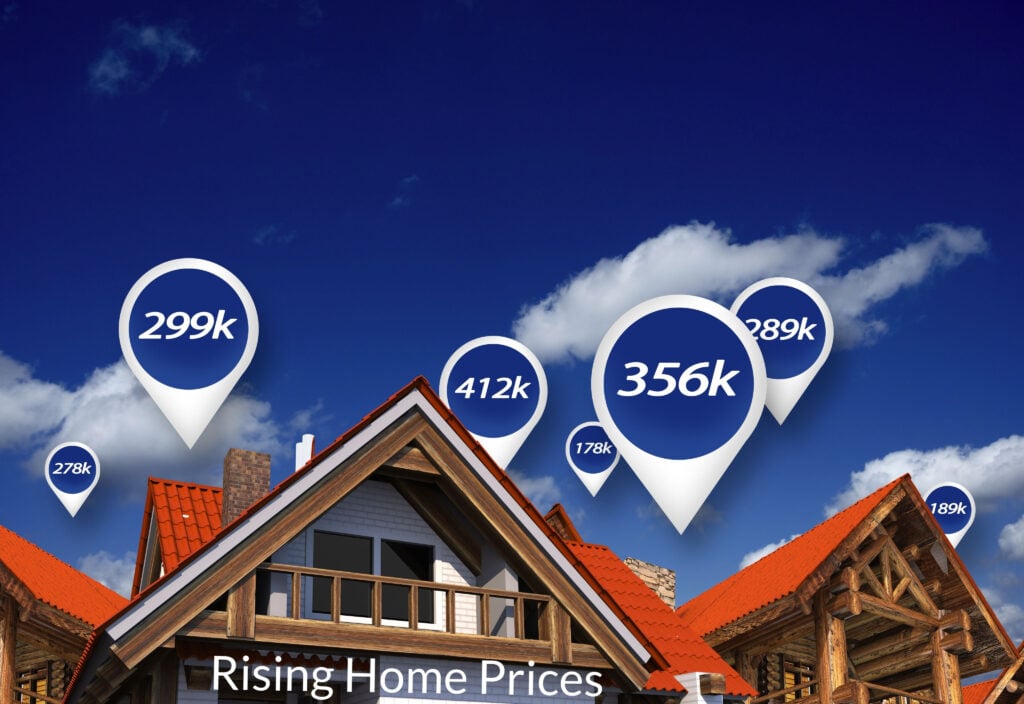Many people remember the financial and housing crises of 2007 and 2008. That’s when the overheated housing market didn’t just slow down but instead went into a tailspin with millions of home prices dropping below the amount of the mortgage. These are known as ‘underwater’ mortgages. It also became known as the Great Recession when foreclosures became the icon of the era.

With that in mind, many prospective homebuyers today think it might be wise to put off their home purchase until the market bottoms out so they can snag a home at a great price. But times and circumstances are not the same as in 2008. We are not going to see hundreds of thousands of homes headed to foreclosure. We are not going to see a glut of home values fall below the value of the mortgage. Existing homes are going to retain their value and prices are going to continue going up at a more moderate pace. Here’s why…
The median U.S. home listing price was $449,000 in July 2022, about the same as it was in June, according to data from Realtor.com. That’s an increase of 16.6% year-over-year. This is contrary to 77% of homebuyers believing there’s a bubble where they live. Home prices are not being driven by loose lending practices and rampant investor speculation in the market as they were before the Great Recession.
1. Mortgage practices have changed. What led up to the crisis of 2008 was years of deregulation of lending practices. It became profitable to hand out high-risk mortgages. Lenders came up with all kinds of strange loans that didn’t make any sense. You could get loans with payment plans that didn’t even cover the full interest payment. Lenders just tacked the unpaid interest onto the back end of the loan. But what was probably the most common and devastating were adjustable rate loans with balloon payments that came due in a few short years. Buyers went into these loans thinking they could afford the payments, finding out later that their payments grew severely to unaffordable levels. There was a lot of predatory lending going on. The biggest casualty was equity or not being able to grow wealth via the value of a home. Some people simply stopped making payments on a mortgage that was higher than the value of their homes. Others were foreclosed on because they could not afford the soaring adjustable rate loans. Lenders started going broke and shutting their doors by the hundreds. That’s what led to the financial crisis along with the housing crisis.
During the recent two-year run-up in home prices, it has been much more difficult for buyers to qualify for a mortgage because lenders have not been making risky loans that can’t be repaid. Most of that is the result of the Dodd-Frank Act of 2010 which increased the oversight in the industry. Many people thought the new regulations went too far but a dozen years later it means far fewer borrowers are headed into foreclosure. According to the Federal Reserve Bank of New York, the median credit score of new mortgages was 773 in the second quarter of 2022. This is a solid indication that lending standards have remained high even when buyers have struggled to afford the cost of a home today.
2. The pandemic wasn’t the housing catastrophe that many feared. It was feared in the beginning that millions of unemployed and underemployed homeowners would default on their mortgages. But that never materialized. Mortgage forbearance programs permitted struggling homeowners to pause their payments until they could get back to work. At the end of June 2022, only 0.5% of mortgages were 90-plus days past due. Instead of the pandemic’s economic upheaval causing a wave of foreclosures, it has ended with a historically low level of foreclosures. Additionally, rising home prices have brought increased equity for homeowners. In total, mortgage holders now have $2.8 trillion more in equity compared to a year ago. That amounts to more than $207,000 in additional equity per homeowner.
3. Without massive foreclosures there will not be an oversupply. This is almost intuitive today. We have a housing shortage, not an oversupply. All the foreclosures from the Great Recession caused a tidal wave of houses to come on the market as bank-owned real estate. The banks were desperate to get foreclosures off their balance sheets at any cost before they were forced to close their doors. Of course, house prices plummeted. This caused more mortgages to go underwater and even owners that could afford their payments stopped paying on underwater mortgages. No one could afford to sell their existing house to move up to a better one or to take a new job in another state. The entire economy froze up. What is different today is that we still have high demand and low supply. This is why the prices of homes are continuing to go up even as interest rates make them less affordable. Prices are going up slowly but don’t look for them to go down any time soon.
Waiting to buy a home is not likely to result in what some buyers are hoping for. There is no room for a bubble at this time. What you can expect is for both interest rates and home prices to continue increasing but at a slower rate. The affordability problem is not going to get any better any time soon.
Please leave a comment.
Also, our weekly Ask Brian column welcomes questions from readers of all experience levels with residential real estate. Please email your questions, inquiries, or article ideas to [email protected].